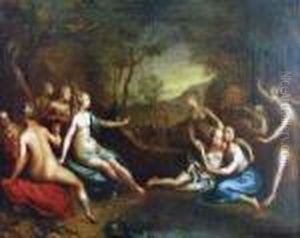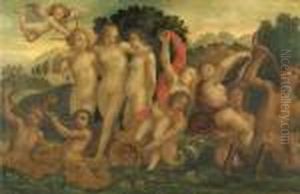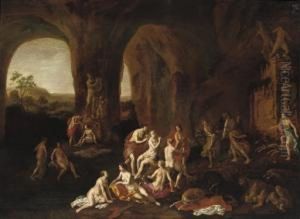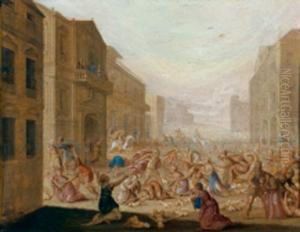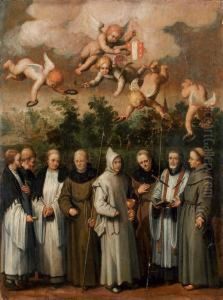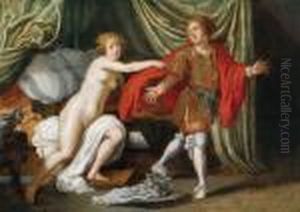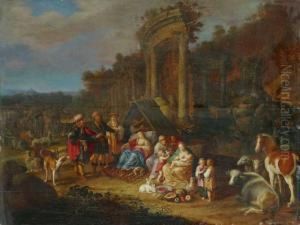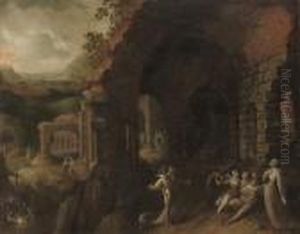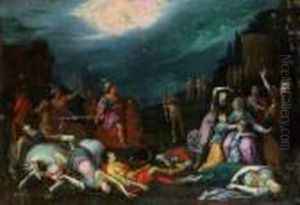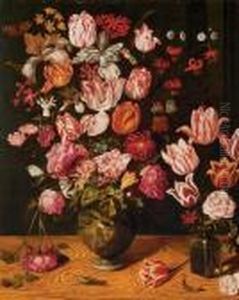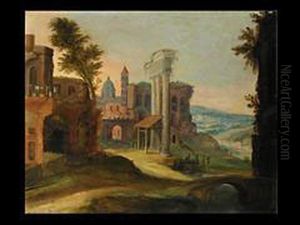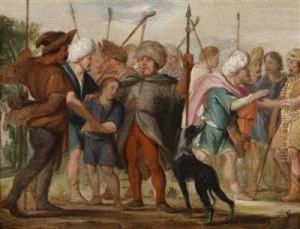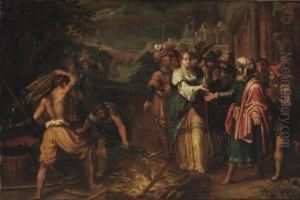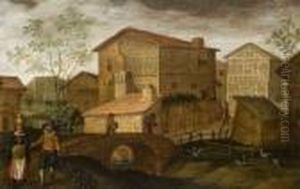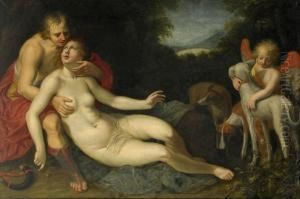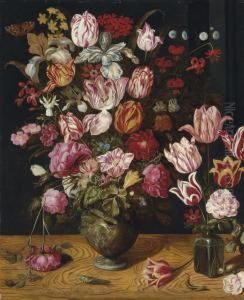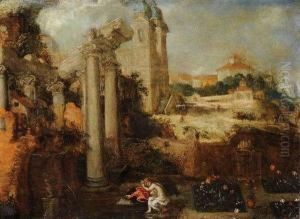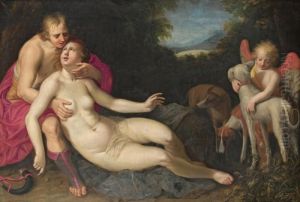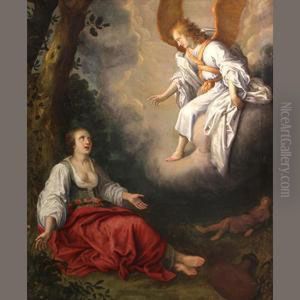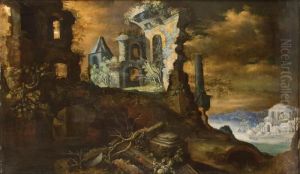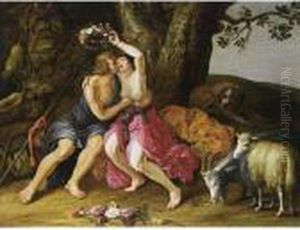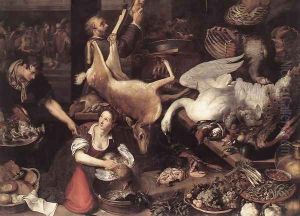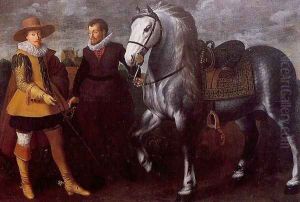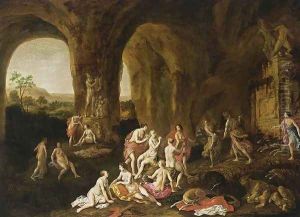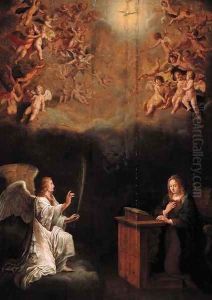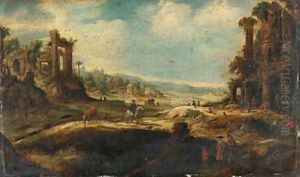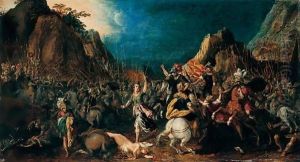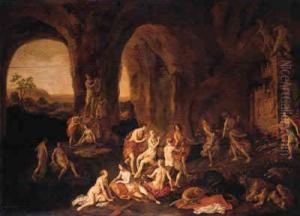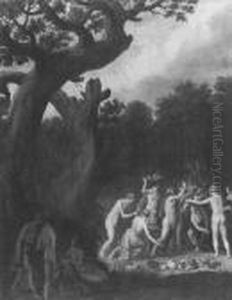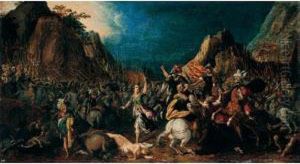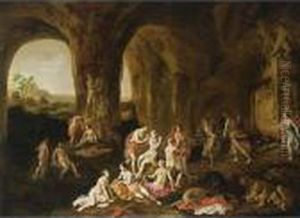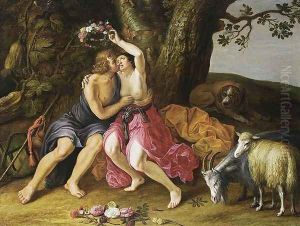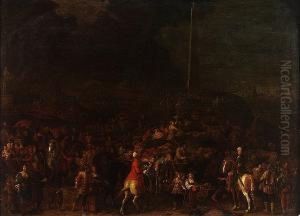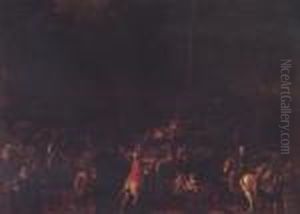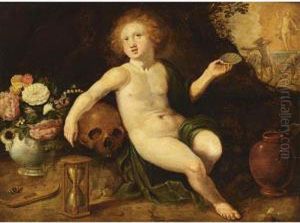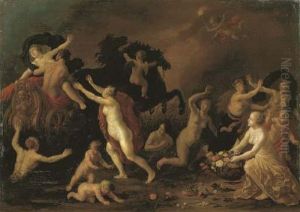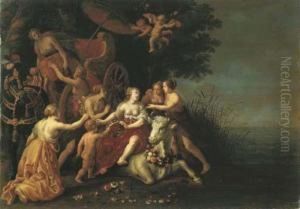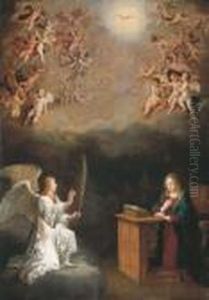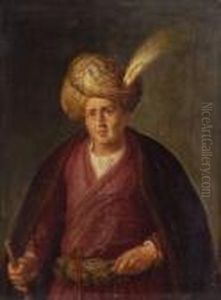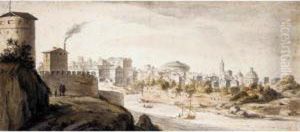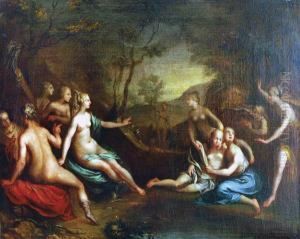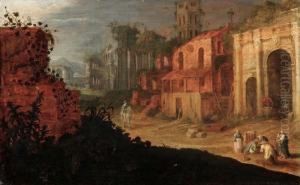Adriaen van Nieulandt Paintings
Adriaen van Nieulandt was a Dutch Golden Age painter and engraver of Flemish origin. Born in Antwerp in 1587, van Nieulandt moved to Amsterdam with his family as a child to escape the religious turmoil of the Eighty Years' War. His family was part of the large influx of Flemish immigrants who contributed significantly to the cultural and economic life of the Dutch Republic.
Van Nieulandt was a versatile artist, skilled in painting landscapes, genre scenes, and historical subjects. He was also known for his altarpieces and was a respected member of the Amsterdam artist's guild, the Guild of St. Luke, which he joined in 1614. Throughout his career, van Nieulandt trained several apprentices who would go on to have successful careers of their own.
His style reflects the influence of the Flemish Baroque and the early Amsterdam school, with a particular emphasis on detailed landscapes and still-life elements within his compositions. His works often feature a careful arrangement of figures and objects, with a strong sense of atmospheric perspective. Despite his Flemish roots, van Nieulandt's work was very much in line with the tastes of the Dutch patrician class, and he enjoyed patronage from wealthy merchants and civic leaders.
Adriaen van Nieulandt's paintings are characterized by their vivid detail and precise technique, which he combined with a keen observation of everyday life and a subtle use of color. His contributions to Dutch art were recognized during his lifetime, and today his works can be found in various museums and collections. He passed away in Amsterdam in 1658, leaving behind a legacy that reflects the rich cultural exchange between the Netherlands and Flanders during the 17th century.
